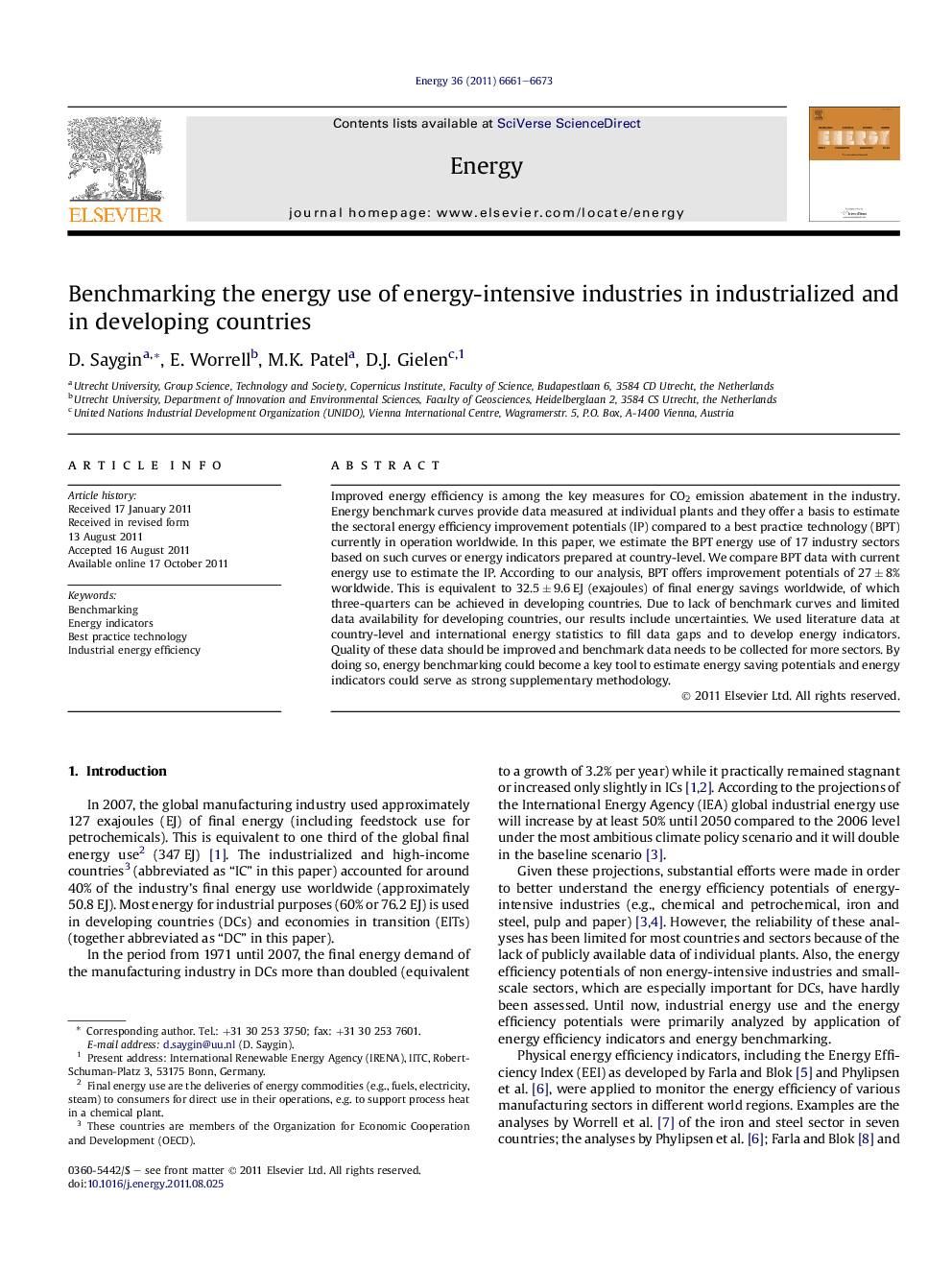| Article ID | Journal | Published Year | Pages | File Type |
|---|---|---|---|---|
| 1734406 | Energy | 2011 | 13 Pages |
Improved energy efficiency is among the key measures for CO2 emission abatement in the industry. Energy benchmark curves provide data measured at individual plants and they offer a basis to estimate the sectoral energy efficiency improvement potentials (IP) compared to a best practice technology (BPT) currently in operation worldwide. In this paper, we estimate the BPT energy use of 17 industry sectors based on such curves or energy indicators prepared at country-level. We compare BPT data with current energy use to estimate the IP. According to our analysis, BPT offers improvement potentials of 27 ± 8% worldwide. This is equivalent to 32.5 ± 9.6 EJ (exajoules) of final energy savings worldwide, of which three-quarters can be achieved in developing countries. Due to lack of benchmark curves and limited data availability for developing countries, our results include uncertainties. We used literature data at country-level and international energy statistics to fill data gaps and to develop energy indicators. Quality of these data should be improved and benchmark data needs to be collected for more sectors. By doing so, energy benchmarking could become a key tool to estimate energy saving potentials and energy indicators could serve as strong supplementary methodology.
► Best practice technology (BPT) energy use of 17 industry sectors was estimated. ► BPT is based on either energy benchmark studies or country-level energy indicators. ► Global and regional energy saving potentials are estimated based on BPT data. ► Worldwide final energy saving potential is estimated as 32.5 ± 9.6 EJ (exajoules). ► Benchmarking and indicators are key methodologies if data quality is improved.
